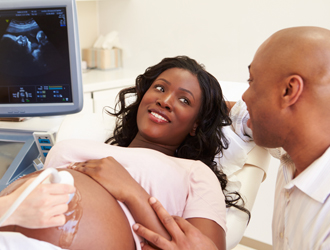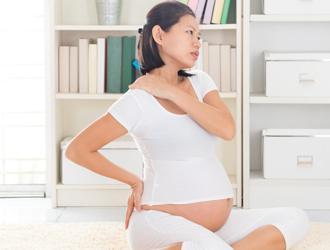The early signs of labor can be tricky to pinpoint and can first occur when the trip to the hospital is still days away. Here are some telltale signs that will help you realize that labor is near.
Signs of labor
Even if you’ve read every guidebook available on pregnancy, the early signs of labor are confusing. You may experience false alarms and, as a first time mother, you may not know what to expect. Here are some of the main signs labor is near:Nesting
A few weeks or even a few months before the due date, you may feel a sudden spurt of energy. Suddenly, you feel productive. You set up the nursery, throw out the recyclables, sweep the house, and do the laundry. Nesting is one of the less known early signs of labor and can lead to strange behavior in some women, such as throwing out perfectly good sheets or disinfecting screws on the door knob. Nesting can also be seen in females of the animal kingdom and is brought about by an instinct to prepare for the baby’s arrival.
Shivering
Shivering, even when not cold, can happen in early labor, during birth, or after birth. It usually lasts a few minutes and is your body’s way of relieving tension.
Lightening
Lightening can occur a few weeks or a few hours before labor and is the process by which your baby settles into your pelvis. This process makes you feel “lighter”. Your abdomen may no longer touch your breasts, and you might also notice that you can breathe easier as pressure is released from your diaphragm. Lightening may cause a feeling of pressure on your bladder, leading to more trips to the bathroom.Diarrhea
Your bowels may be stimulated several days before birth. Your body naturally empties your bowels in order to make way for the baby, as labor approaches.
Lower back ache
The baby will get heavier and drop lower, leading to lower back and pelvis pain.
Braxton Hicks contractions
These are “false alarms” and, therefore quite confusing early signs of labor. Unlike labor contractions, Braxton Hicks contractions do not increase in duration and strength. They are irregular and a change of position often relieves them.
Effacement
Effacement, or thinning of the cervix, is the cervix’s process of preparing for delivery. This is one of the most important signs labor is near. As labor nears, your doctor will routinely measure your effacement in percentages: The more effaced you are, the higher the percentage measured.Dilation of the cervix
Dilation accompanies effacement and is the opening of the cervix during childbirth. It may occur before or after effacement.
Loss of mucus plug
As the cervix become thinner, the mucus plug that protects the cervix is loosened and passes out of the vagina. The mucus may be tinged with blood and, for this reason, is often called a “bloody show.”
Labor contractions
Labor contractions are consistent, at regular intervals, and become more painful over time. Usually, they cannot be relieved by a change in position. Strong and regular contractions (usually about 3-5 minutes apart) are often a sign you are in labor.
Water breaking
Most women’s water breaks only well into labor, so this event is among the telltale signs labor is near, very near. When your water breaks, you will have no control over the flow and there is no smell of urine. The water should be clear or pinkish, but if it is any other color, you should get it checked with your midwife or doctor.




